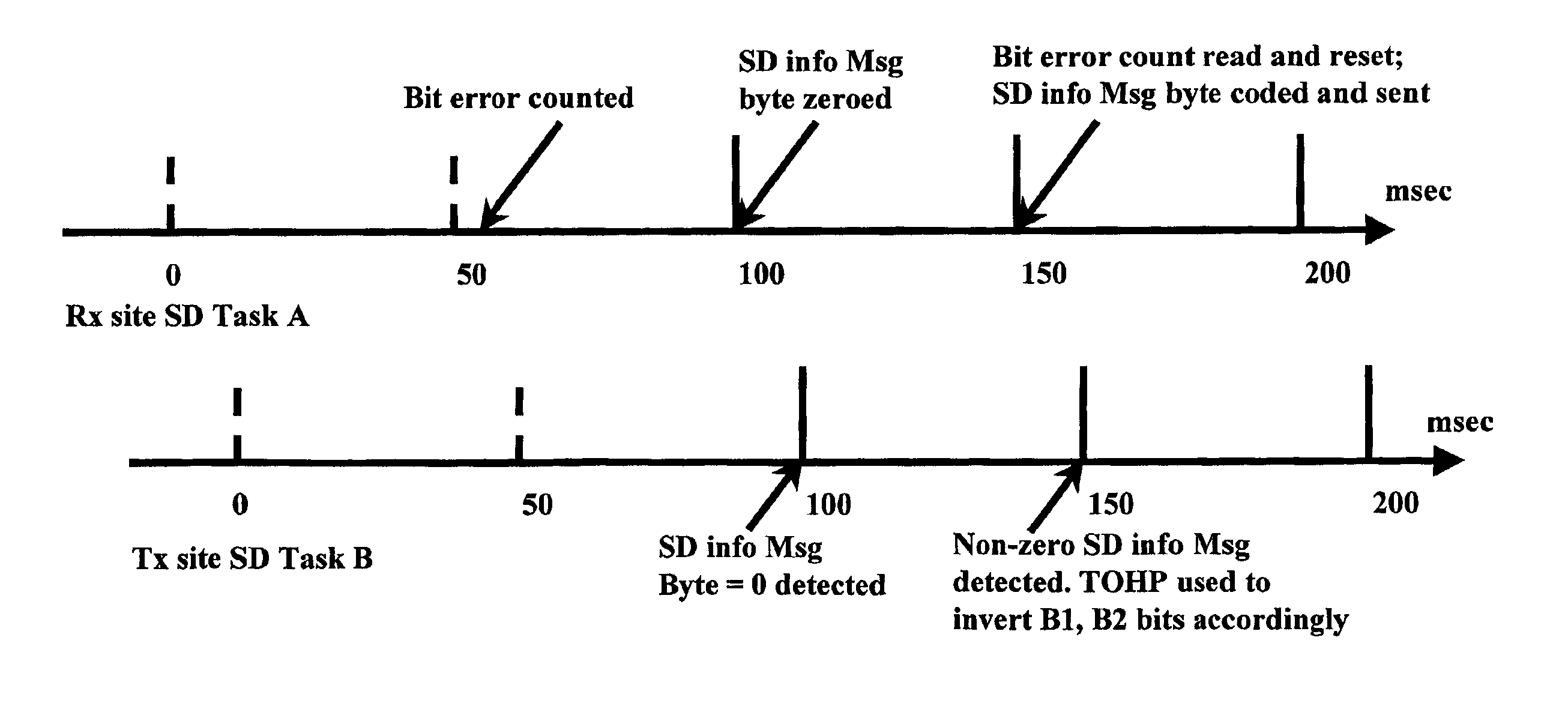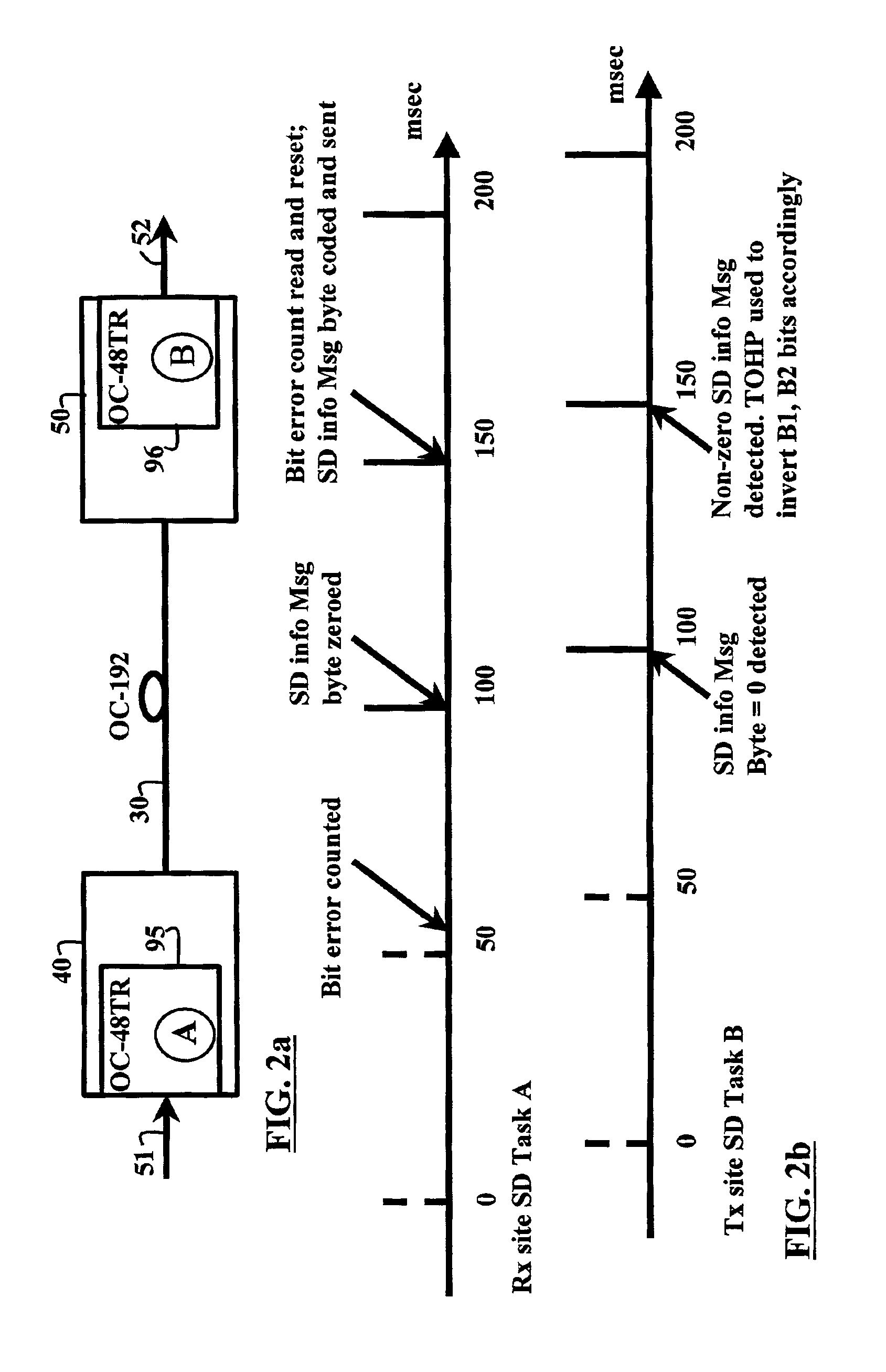Method and system for signal degrade (SD) information passthrough in T-Mux systems
a signal degrade and information passthrough technology, applied in the field of operation, administration, maintenance and provisioning, can solve the problems of error introduction, delay in error propagation, and affect the tim
- Summary
- Abstract
- Description
- Claims
- Application Information
AI Technical Summary
Benefits of technology
Problems solved by technology
Method used
Image
Examples
Embodiment Construction
[0033]The present invention is best understood with reference to the prior art of Applicant's U.S. Pat. No. 5,841,760 to Martin et al. FIG. 1 is a block diagram of the prior art SONET transport node previously described by Martin et al. FIG. 1 schematically illustrates the components involved in carrying four OC-48 trib systems over an OC-192 span from input T-Mux 40 to output T-Mux 50, using a “nailed up” OC-192 P-channel trib protection type. In this nailed up case example, each trib P-channel is carried over an OC-192 P-channel without OC-192 protection switching enabled. The operation for a forward direction is illustrated and described below for simplification. The T-Mux pair 40, 50 operates similarly for the reverse traffic. Throughout, the reference K is used to indicate the number of tributary systems carried across the transport node.
[0034]T-Mux 40 comprises K=4 trib input ports 61-64, each input port receives an incoming SONET formatted optical signal OC-48#1-4 over a resp...
PUM
 Login to View More
Login to View More Abstract
Description
Claims
Application Information
 Login to View More
Login to View More - R&D
- Intellectual Property
- Life Sciences
- Materials
- Tech Scout
- Unparalleled Data Quality
- Higher Quality Content
- 60% Fewer Hallucinations
Browse by: Latest US Patents, China's latest patents, Technical Efficacy Thesaurus, Application Domain, Technology Topic, Popular Technical Reports.
© 2025 PatSnap. All rights reserved.Legal|Privacy policy|Modern Slavery Act Transparency Statement|Sitemap|About US| Contact US: help@patsnap.com



